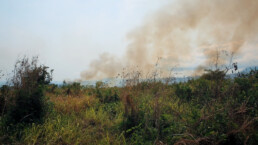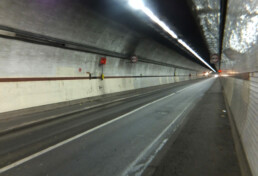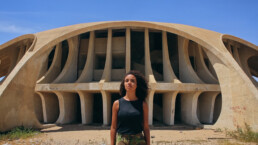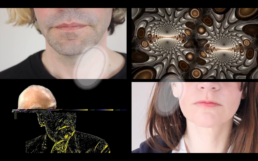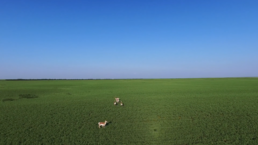FUSO INSULAR 2022 – 27 a 30 de Outubro
27 Outubro, 21h30
Igreja do Colégio – Ponta Delgada
NÓS SER O OUTRO: PARA UMA POÉTICA DO RELACIONAMENTO
Paul Goodwin
Em 1871, o poeta Arthur Rimbaud escreveu numa carta “je est un autre” [eu é um outro] – uma afirmação profundamente influente para o subsequente entendimento do sujeito ocidental moderno como um ser fragmentado, dividido e aberto ao outro. Para Rimbaud, o poeta ou o artista têm qualidades de visão especiais e uma criatividade baseada na dissolução do ser. Pouco mais de cem anos depois, o poeta e filósofo caribenho Edouard Glissant articulou uma visão mais complexa, relacional e mundialista da identidade como base para a criatividade humana. Glissant apelou para uma poética do relacionamento onde as identidades seriam múltiplas, crioulas e globais. O ‘eu´ passa a ser ‘nós’.
Esta seleção de obras em vídeo reflete a transição de subjetividades individualizadas e modos de criação característicos do património do modernismo artístico para uma nova maneira de ver o mundo contemporâneo das imagens. Este modo de ver gira em torno do descentramento do olhar eurocêntrico, extrativo, masculino (branco), e dos traços da desordem que se encontram logo abaixo da superfície da circulação sempre crescente de imagens no capitalismo neoliberal global.
Muito embora estas obras tenham geneaologias, métodos e intenções artísticas muito diferentes, coletivamente elas exploram e jogam com padrões, ressonâncias, códigos, ritmos, visões científicas do mundo, algoritmos e arquivos, de forma a desmantelar a visão colonial e o tempo colonial.
Haroon Mirza’s /// //// (Aquarius) (2017) é uma meditação rítmica sobre identidades europeias em mudança, pesquisa científica e mudanças de paradigma na consciência humana, que sugerem uma nova metafísica visual e sonora da Era de Aquário.
As obras de Mónica de Miranda, “Red Horizon” e “All the Burns” (2020), encenam uma reflexão poética e lírica sobre a forma como os fantasmas do colonialismo português e europeu assombram as paisagens e arquiteturas dos territórios pós-coloniais.
O filme de Alia Syed, “On a Wing and a Prayer” (2016), é inspirado na notável história de Abdul Rahman Haroun, que atravessou a pé o Eurotúnel, de França para Inglaterra, em 2015. O filme de Syed consiste numa performance na qual faz uma travessia a pé de um outro túnel em Londres, o Rotherhithe, com câmaras presas ao seu corpo – dando ao espetador a mesma perspetiva de Haroun – num ato de solidariedade artística.
E, por último, a curta-metragem do artista neerlandês Remy Jungerman “BROOS” (2022) é uma colagem sonora e visual de fotografias e imagens de arquivo de rituais ancestrais, realizados por descendentes dos Bakabusi na plantação de Rorac no Suriname, a terra natal do artista. O filme e a banda sonora do compositor de jazz Jason Moran fazem uma elegia comovente à poética da resistência das comunidades quilombolas na ex-colónia holandesa.
ALL THAT BURNS – Monica de Miranda
Tudo o que arde desfaz-se no ar – como em “Tudo o que é sólido dissolve-se no ar”, de Marx e Engels – transporta-nos para um imaginário do tempo presente, marcado pela realidade e urgência do aquecimento global. A metáfora de que tudo o que queima se dissipa e se funde com o ar num processo transformador (muitas vezes na tentativa de apagar memórias), alude às mudanças sociais e políticas na África. Durante a ascensão dos movimentos de libertação na África, o socialismo explorou a experiência da modernidade, na sua utopia e subsequente queda na decadência, uma realidade muito diferente daquele que era o seu projeto inicial. Um retrato parcialmente ficcionado e parcialmente documental, “All that burns” mostra espaços e lugares entre a ruína e a floresta, entre as visões utópicas da vanguarda modernista e as imagens pós-queda do socialismo e das suas ideologias. Espaços e lugares em São Tomé e Príncipe, apresentados como remanescentes do colonialismo, representando a queda de um império.
BROOS – Remy Jungerman
“Broos” é um filme composto por fotografias e breves clipes de filmes que Jungerman fez durante rituais ancestrais realizados por descendentes dos Bakabusi, na plantação de Rorac no Suriname, América do Sul. A composição rítmica dos curtos fragmentos a preto e branco é sublinhada pela composição “Follow the Light”, do músico e compositor de Jazz americano Jason Moran. Em 2006, um ano após a morte do seu pai, Jungerman participou num ritual na plantação de Rorac, onde a sua mãe, uma Maroon, nasceu. A plantação tinha passado para as mãos dos Bakabusi, guiados pelo chefe supremo surinamês – o Granman. Jungerman documentou esses rituais em fotografias e em filmes. Por vezes, uma imagem colorida irrompe como um solo de jazz. As imagens aparecem repetidamente, conferindo-lhes uma qualidade insistente. O espetador é transportado para um espaço que não é revelado explicitamente, mas que oferece pistas sobre as origens do artista. O filme contém imagens do documentário “Visiting Deities” (1962), do antropólogo Bonno Thoden van Velzen.
ON A WING AND A PRAYER – Alia Syed
“On a Wing and a Prayer” é um filme inspirado em Abdul Rahman Haroun, que atravessou a pé o Eurotúnel, de França para a Inglaterra, em agosto de 2015. Haroun esteve detido durante 5 meses na prisão de Elmley. Foi finalmente libertado e foi-lhe concedido asilo, para logo de seguida ser acusado de ‘atos danosos’, à luz da Malicious Damages act de 1861, por entrada ilegal no Reino Unido. A linguagem desta lei estatutária, justaposta a este esforço gigantesco, físico e emocional, de atravessar os 50km do Eurotúnel, é o ponto de partida para este filme. “On a Wing and a Prayer” é uma abordagem performativa da jornada de Haroun, com a artista a caminhar no Túnel Rotherhithe. A viagem é filmada com duas câmaras de vídeo colocadas no seu corpo. É o ponto de vista na primeira pessoa que é oferecido ao público, solicitando um investimento recíproco no esforço físico e emocional deste ato. Os espetadores sentem no corpo a relação com o entorno, apercebendo-se da dissonância cognitiva existente no coração da Europa.
RED HORIZON – Monica de Miranda
Uma mulher está no cimo de uma colina no deserto da Namíbia, em Angola, olhando para o extenso horizonte de um vasto deserto, na esperança de cruzar essas fronteiras que simbolizam a reapropriação dessa terra e a restituição de uma identidade perdida. A paisagem enquanto patologia é explorada através destas imagens – a forma como a violência do passado se manifesta na paisagem do presente, tanto intrínseca como simbolicamente. Vivemos no tempo presente, tempo este que transporta as marcas da sua história. Por muito que queiramos ocupar os lugares, estes têm a capacidade de nos pre-ocupar. O horizonte vermelho, e o desígnio da libertação, surgem como miragens nesta caminhada performativa. Em nome da revolução, esta mulher caminha sozinha, confrontando-se a si mesma, para descobrir que o ideal revolucionário é, acima de tudo, uma jornada pessoal de transformação.
FUSO INSULAR 2022 – October 27th to 30th
October 27, 9.30pm
Igreja do Colégio – Ponta Delgada
WE IS AN OTHER: FOR A POETICS OF RELATION
Paul Goodwin
In 1871, the poet Arthur Rimbaud declared in a letter ‘je est une autre’ [I is an other] – a statement which has been widely influential in subsequent understandings of the modern Western subject as fragmented, distributed and open to the other. Rimbaud saw the poet or artist as having special qualities of vision and creativity based on the dissolution of the self. A little over one hundred years later Caribbean poet and philosopher Edouard Glissant articulated a more complex, relational and worlded vision of identity as the basis for human creativity. Glissant called for a poetics of relation where identities are multiple, creolised and global. The ‘I’ becomes ‘we’.
This selection of video works reflects the transition from individualised subjectivities and modes of creation characteristic of the heritage of artistic modernism towards a new way of seeing the contemporary world of images. This way of seeing revolves around the decentering of the Eurocentric, extractive, (white) male gaze and the traces the disorder that lies just beneath the surface of the ever expanding circulation of images in global neoliberal capitalism. Although these works have very different genealogies, methods and artistic intentions, collectively they explore and play with patterns, resonances, code, rhythms, scientific worldviews, algorithms and archives in ways that disrupt colonial vision and colonial time.
Haroon Mirza’s /// //// (Aquarius) (2017) is a rhythmic meditation on changing European identities, scientific research and paradigm shifts in human consciousness that suggests a new visual and sonic metaphysics of the Age of Aquarius.
Monica de Miranda’s works (Red Horizon and All the Burns (2020)) stage a poetic and lyrical reflection on how the ghosts of Portuguese and European colonialism haunt the landscapes and architectures of postcolonial territories.
Alia Syed’s film On a Wing and a Prayer (2016) is inspired by the remarkable story of Abdul Rahman Haroun, who walked through the channel tunnel from France to England in 2015. In the film Syed performs an act of artistic solidarity by filming with cameras attached to her body as she walks through the Rotherhithe Tunnel.
Finally, Dutch artist Remy Jungerman’s short film BROOS (2022) is a sonic and visual collage of photographs and archive film footage of ancestral worship rituals held by Bakabusi descendants on the Rorac plantation in Suriname, the artist’s homeland. The film and soundtrack by jazz composer Jason Moran create a moving elegy to the poetics of resistance of maroon communities in the ex-Dutch colony.
ALL THAT BURNS – Monica de Miranda
All that burns melts into air – as in “All that is solid melts into air”, by Marx and Engels – brings us to an imaginary of the present time marked by the reality and urgency of global warming. From the metaphor that everything that burns (often in attempts to erase memories) melts and merges with air in a transformative process, it refers to social and political changes in Africa. During the rise of liberation movements in Africa, Socialism explored the experience of modernity, in its utopia and in its fall from a safe institution to something decadent very different from its initial project. A partly fictionalised and partly documentary portrait, All that burns shows spaces and places between ruin and the forest, between the utopian visions of the modernist avant-garde and the post-fall images of Socialism and its ideologies. Set in the island of Sao Tome e Principe these spaces are presented as the remnants of colonialism and represent the fall of an empire.
BROOS – Remy Jungerman
Broos is a film composed of photographs and brief film clips Jungerman made during ancestral worship rituals held by Bakabusi descendants on the Rorac plantation in Suriname, South America. The rhythmic arrangement of short black-and-white fragments is underscored by the composition “Follow the Light” by American jazz musician and composer Jason Moran. In 2006, a year after his father’s death, Jungerman took part in an ancestral worship ritual at the Rorac plantation, where his mother, a Maroon, was born. The plantation had been given to the Bakabusi, followers of Surinamese freedom fighter Granman, the paramount chief. Jungerman documented these rituals in photographs and on film. Sometimes a coloured image bursts forth, like a jazz solo. The images appear repeatedly, lending them an insistent quality. The viewer is transported into a space that doesn’t reveal itself explicitly, but offers clues as to the artist’s sources. The film contains images from the documentary Visiting Deities (1962) by anthropologist Bonno Thoden van Velzen.
ON A WING AND A PRAYER – Alia Syed
On a Wing and a Prayer is a film inspired by Abdul Rahman Haroun, who walked through the channel tunnel between France and England in August 2015. Mr Haroun was held on remand for 5 months at Elmley Prison. He was eventually released and granted Asylum but was charged under the Malicious Damages act of 1861 for illegal entry into the UK. The language in this bylaw, when juxtaposed against the physical and emotional feat of traversing 30 miles of the Channel Tunnel supplies the terrain for this film. This film is a performative approximation of Mr Haroun’s journey achieved through the artist filming her own walk through the Rotherhithe Tunnel. The journey is shot on two video cameras attached to the artist’s body. The first-person view offered to the audience in the film invites a reciprocal investment in the physical and emotional exertion of the act. The audience senses with their whole bodies the relationship to the environment created by the cognitive dissonance at the heart of Europe’s lawscape.
RED HORIZON – Monica de Miranda
A woman stands on top of a hill in Namibia desert in Angola, looking into an extensive horizon of a vast desert, she signals the hope of crossing these borders symbolising the repossession of the land and the regaining of a lost identity. The landscape as pathology is explored through these images; how past violence manifests in the landscape of the present, both intrinsically and symbolically. We live in a present space, but one that bears the marks of its history. As much as we occupy places, they have the capacity to pre-occupy us. The red horizon or the destiny for the liberation are like mirages on the walking performance. This woman walks alone and has to face herself alone in the name of the revolution to find out that the revolutionary quest is more a personal journey of personal transformation.
